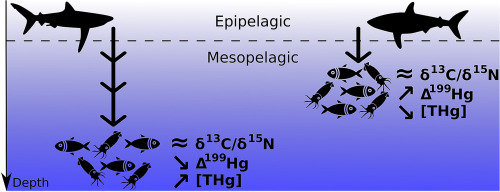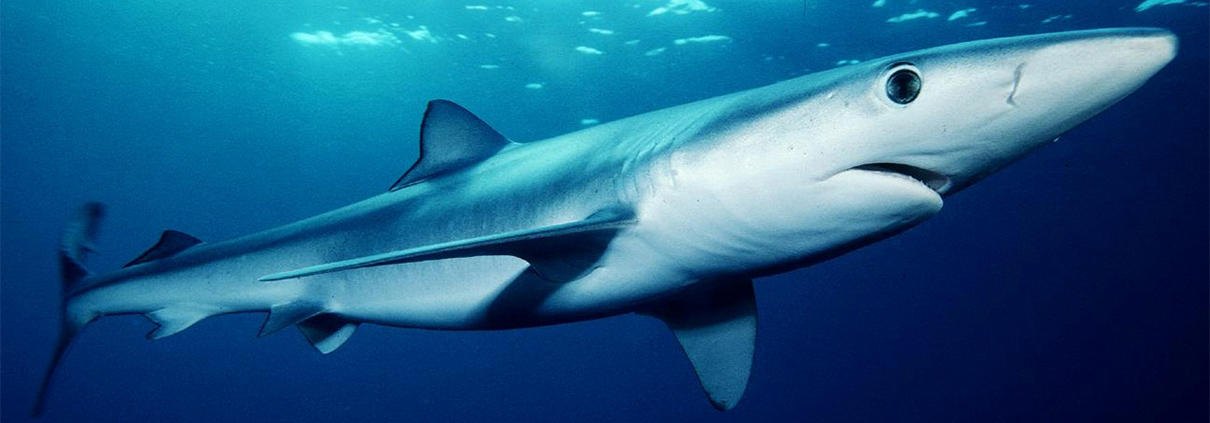Foraging depths of pelagic sharks: Insights from mercury stable isotopes
Abstract
The decline of shark populations in the world ocean is affecting ecosystem structure and function in an unpredictable way and new ecological information is today needed to better understand the role of sharks in their habitats. In particular, the characterization of foraging patterns is crucial to understand and foresee the evolution of dynamics between sharks and their prey. Many shark species use the mesopelagic area as a major foraging ground but the degree to which different pelagic sharks rely on this habitat remains overlooked. In order to depict the vertical dimension of their trophic ecology, we used mercury stable isotopes in the muscle of three pelagic shark species (the blue shark Prionace glauca, the shortfin mako shark Isurus oxyrinchus and the smooth hammerhead shark Sphyrna zygaena) from the northeastern Pacific region. The Δ199Hg values, ranging from 1.40 to 2.13‰ in sharks, suggested a diet mostly based on mesopelagic prey in oceanic habitats. We additionally used carbon and nitrogen stable isotopes (δ13C, δ15N) alone or in combination with Δ199Hg values, to assess resource partitioning between the three shark species. Adding Δ199Hg resulted in a decrease in trophic overlap estimates compared to those based on δ13C/δ15N alone, demonstrating that multi-isotope modeling is needed for accurate trophic description of the three species. Mainly, it reveals that they forage at different average depths and that resource partitioning is mostly expressed through the vertical dimension within pelagic shark assemblages. Concomitantly, muscle total mercury concentration (THg) differed between species and increased with feeding depth. Overall, this study highlights the key role of the mesopelagic zone for shark species foraging among important depth gradients and reports new ecological information on trophic competition using mercury isotopes. It also suggests that foraging depth may play a pivotal role in the differences between muscle THg from co-occurring high trophic level shark species.
Graphical abtsract

Highlights
– δ13C, δ15N, Δ199Hg and δ202Hg were determined in three pelagic shark species.
– Hg isotopes suggest that these shark species forage on mesopelagic prey.
– δ13C and δ15N overestimate overlaps between trophic niches.
– Differences in foraging depth better explain resource partitioning.
– Foraging depth influences mercury contamination level.
Reference
Lucien Besnard, Gaël Le Croizier, Felipe Galván-Magaña,David Point,Edouard Kraffe, James Ketchum, Raul Octavio Martinez Rincon, Gauthier Schaal. Foraging depth depicts resource partitioning and contamination level in a pelagic shark assemblage: Insights from mercury stable isotopes. Environmental Pollution, Volume 283, 2021, 117066. ISSN 0269-7491. https://doi.org/10.1016/j.envpol.2021.117066.





